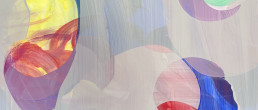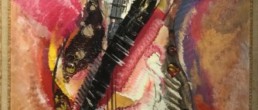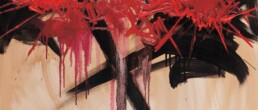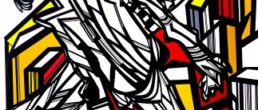Pierre-Auguste Renoir
1841 (Limoges) - 1919 (Cagnes-sur-mer)
No work available for the moment.
Biography
In 1862, Renoir enters the Beaux-Arts Academy and the Gleyre studio where he meets Monet, Bazille and Sisley. His early paintings were Classical, Romantic and Realist in nature and have been widely under estimated. He painted a large amount of landscapes and female nudes (especially of Lise Tréhot, who was his mistress). This young woman was vital to Renoir’s art, and when their relationship ended, his art took a new turn. Renoir’s career really began in 1867 during the exhibition ofla Lise à l’ombrelle.
From 1870 to 1883, Renoir entered his Impressionist period. He painted many landscapes, but his most characteristic works often dealt with urban social life. Whatever the subject, his biggest preoccupation was youth and vitality. His most important work from this decade is his, Lunch on of the Boating Party from 1880-81.
From 1883 à 1890, Renoir enters his ‘Ingres’ period. After a trip to Italy, he felt uncertain about his art and wanted to modify his brushstroke. His contours became more precise, especially those surrounding his characters. His drawing became more rigorous and his colour palette warmer. When he becomes a father for the first time to Pierre (1885), Renoir abandons his work in progress to concentrate on the theme of maternity. He then paints his most significant work of the period, the Large Bathers, which takes him three years to complete.
From 1890 to 1900, Renoir once again alters his style. He no longer works in an Impressionist or Ingres style, but rather a mix of the two. In 1894, Renoir becomes a father for a second time to Jean (who later becomes a filmmaker) once again he takes up the maternity theme. The caretaker of his children, Gabrielle Renard, becomes once of his most important models of the period.
From 1900 to 1919, Renoir enters his fourth artistic period, his ‘Cages’ period. During this period he suffers from severe rheumatism. The birth of his son Claude in 1901, gives a new splendour to his work. On numerous occasions, he would paint him in the company of his nanny. It does not take long before she too becomes one of the artists’ models. After the death of his wife Aline in 1915, Renoir, confined to a wheelchair, paints to forget his grief. He dedicates himself to sculpture thanks to a collaboration with Richard Guino, a young Catalan artist introduced to him by Maillol and Vollard.
Of all of the Impressionists, Renoir was most known for painting the events and pleasures of ordinary people sometimes straying from the Impressionist style. His diverse body of work continues to interest the public and art amateurs alike.






